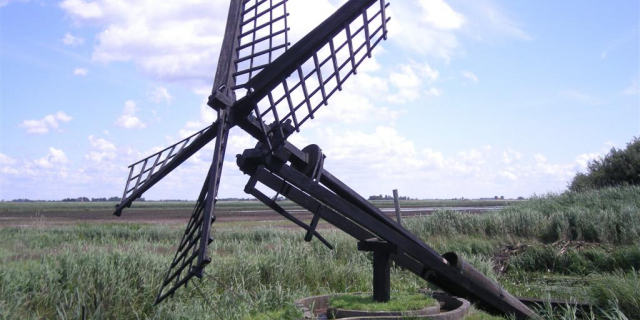Flevoland
Flevoland (Dutch: [ˈfleːvoːlɑnt] ) is the twelfth and newest province of the Netherlands, established in 1986, when the southern and eastern Flevopolders, together with the Noordoostpolder, were merged into one provincial entity. It is in the centre of the country in the former Zuiderzee, which was turned into the freshwater IJsselmeer by the closure of the Afsluitdijk in 1932. Almost all of the land belonging to Flevoland was reclaimed in the 1950s and 1960s while splitting the Markermeer and Bordering lakes from the IJsselmeer. As to dry land, it is the smallest province of the Netherlands at 1,410 km2 (540 sq mi), but not gross land as that includes much of the waters of the fresh water lakes (meres) mentioned.
The province had a population of about 445,000 as of January 2023 and consists of six municipalities. Its capital is Lelystad and its most populous city is Al...Read more
Flevoland (Dutch: [ˈfleːvoːlɑnt] ) is the twelfth and newest province of the Netherlands, established in 1986, when the southern and eastern Flevopolders, together with the Noordoostpolder, were merged into one provincial entity. It is in the centre of the country in the former Zuiderzee, which was turned into the freshwater IJsselmeer by the closure of the Afsluitdijk in 1932. Almost all of the land belonging to Flevoland was reclaimed in the 1950s and 1960s while splitting the Markermeer and Bordering lakes from the IJsselmeer. As to dry land, it is the smallest province of the Netherlands at 1,410 km2 (540 sq mi), but not gross land as that includes much of the waters of the fresh water lakes (meres) mentioned.
The province had a population of about 445,000 as of January 2023 and consists of six municipalities. Its capital is Lelystad and its most populous city is Almere, which forms part of the Randstad and has grown to become the seventh largest city of the country. Flevoland is bordered in the extreme north by Friesland, in the northeast by Overijssel, and in the northwest by the lakes Markermeer and IJsselmeer. In the southeast, the province borders on Gelderland; in the southwest on Utrecht and North Holland. Outside urban areas, the land in Flevoland is predominantly used for agriculture.
After a flood in 1916, the decision was made to enclose and reclaim the Zuiderzee, an inland sea within the Netherlands, and thus the Zuiderzee Works started. Other sources[1] indicate other times and reasons, but also agree that in 1932, the Afsluitdijk was completed, which closed off the sea completely. The Zuiderzee was later divided into IJsselmeer (mere at the end of the river IJssel) and Markermeer, planned to be mostly drained to make the Markerwaard. The Markerwaard was never built due to post-War fiscal austerity.[citation needed]
The first land reclaimed was the northeast polder (Noordoostpolder) in 1942. This took in the former small islands Urk and Schokland. It was at first added to the Province of Overijssel.
In the southwest the Flevopolder – larger than the above – was then reclaimed; its northeastern half in 1957 and its southwestern half in 1968.
A key feature of the latter is a narrow body of water, kept at 3 metres below sea level, along the former coastline to stabilize the water table and prevent coastal towns from losing their waterfront and access to the sea. Thus, the Flevopolder became an artificial island joined to the mainland by bridges. The municipalities on the three parts voted to become a province, shortly before this was effected in 1986.
Since that time, Flevoland is the youngest of the 12 provinces of the Netherlands. Its current sources of revenue are the cultivation of flowers, farming and tourism. In recent times, it has built many wind turbines as a source of renewable energy.
































Add new comment